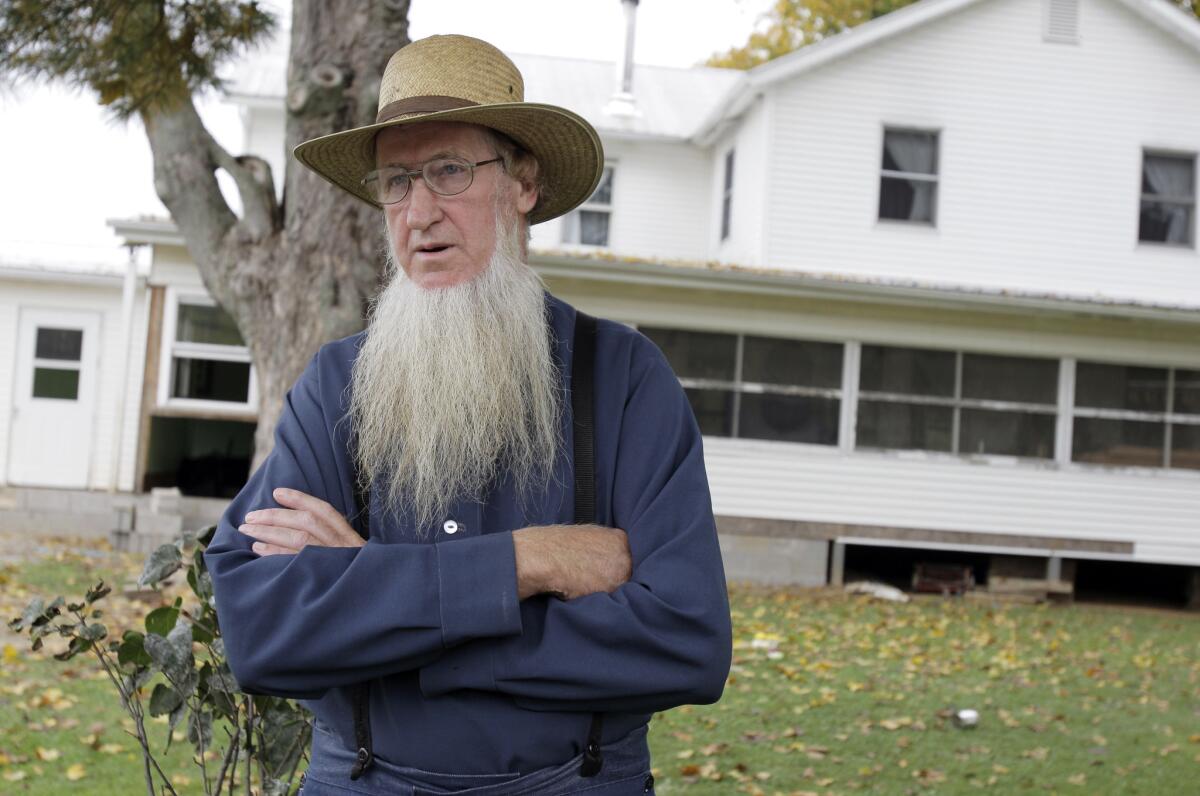Court throws out hate-crime convictions for Amish beard attacks

A federal appeals court in Ohio threw out hate-crime convictions for 16 Amish separatists Wednesday, saying that the jury in their case had not been properly instructed about how to decide whether a series of beard and hair-cutting attacks had been motivated by religion.
A panel of three judges for the U.S. 6th Circuit Court of Appeals split 2-1 on the decision to strike the hate-crime convictions for the Bergholz, Ohio, Amish group.
The decision, if upheld, could bring a retrial for the defendants, who were convicted of the 2011 trimming attacks on friends and relatives who were also Amish, a faith generally known for its pacifism and reluctance to accept modern technology.
The decision also revealed the complicated nature of hate-crime convictions. The court said it was the first appellate case addressing a religious hate crime under the federal Matthew Shepard and James Byrd Jr. Hate Crimes Prevention Act of 2009. The statute’s simple phrasing managed to throw the judges handling the case into an abstract philosophical debate.
Much of the panel’s concern centered on a kind of legal logic puzzle embedded in the statute’s phrasing, which forbids “willfully caus[ing] bodily injury to any person ... because of the actual or perceived ... religion ... of [that] person.”
That means a hate-crime conviction depends on the definition of the words “because of,” which is a more slippery phrase than it seems.
The defendants argued that a court would have needed to show that they would not have attacked their victims for reasons other than being Amish. This is known as the “but-for” legal test: The defendants would not have attacked their victims but for their identity as Amish people.
However at trial, a judge instructed a jury to convict the defendants if religious identity was a “significant motivating factor,” a broader definition of what “because of” means, which troubled the appeals court.
“How should a jury measure whether a specific motive was significant in inspiring a defendant to act? Is a motive significant if it is one of three reasons he acted? One of ten? ‘Uncertainty of [this] kind cannot be squared with the beyond-a-reasonable-doubt standard,’” Circuit Judge Jeffrey S. Sutton wrote, also quoting a U.S. Supreme Court ruling.
In that 2014 high court ruling, handed down after the 2012 trial, the court said that the use of the words “because of” must pass the “but-for” test.
As a result, Sutton said, the jury at trial needed to receive instructions that said the defendants were guilty of a hate crime only if they “would not have acted but for the victim’s actual or perceived religious beliefs.”
The matter of “because” was complex enough that dissenting judge on the panel argued that the majority had gotten it wrong, and that religion didn’t have to be the sole cause of the attacks in order to them to be hate crimes.
“There often exists more than one but-for cause; a number of necessary causes may operate concurrently to produce a given outcome,” wrote Edmund A. Sargus Jr., a district judge sitting on the 6th Circuit Court.
In other words, Sargus argues that even though the Amish defendants said there were many reasons for the hair-cutting attacks — personal mistreatment, power struggles, family infighting — they would not have attacked their victims if the victims had not been Amish.
“What matters is whether the defendants have offered evidence to support the conclusion that they would have cut the victims’ hair and beards even if the victims were not Amish,” Sargus wrote in his dissent. “There is exists no such evidence.”
Although the majority’s decision Wednesday overturns the hate-crime convictions, three defendants’ convictions for concealing evidence stand. One those defendants, Samuel Mullet, the group’s leader, also remains convicted for making false statements to the Federal Bureau of Investigation. He was originally sentenced to 15 years in prison.
“We hope this is one step closer to bringing Mr. Mullet home to his family and his community,’’ Mullet’s attorney, Edward Bryan, told the Cleveland Plain Dealer.
Four of Mullet’s children were among those convicted of carrying out the attacks ordered by their father. They lived among a group of about 20 Amish families on an 880-acre farm in Bergholz, in Ohio’s Jefferson County, about 100 miles southeast of Cleveland.
Follow @MattDPearce for national news
More to Read
Start your day right
Sign up for Essential California for news, features and recommendations from the L.A. Times and beyond in your inbox six days a week.
You may occasionally receive promotional content from the Los Angeles Times.







